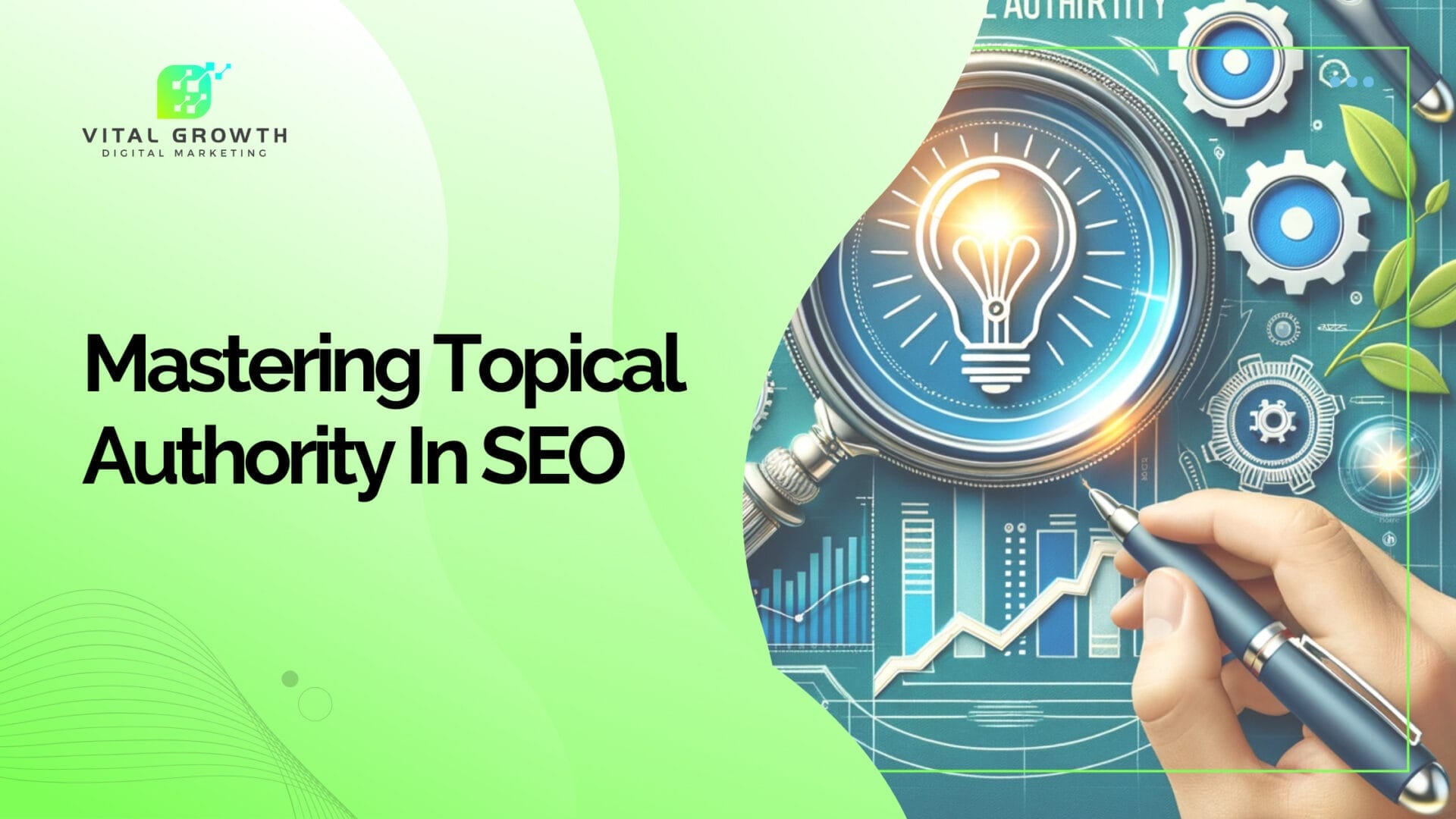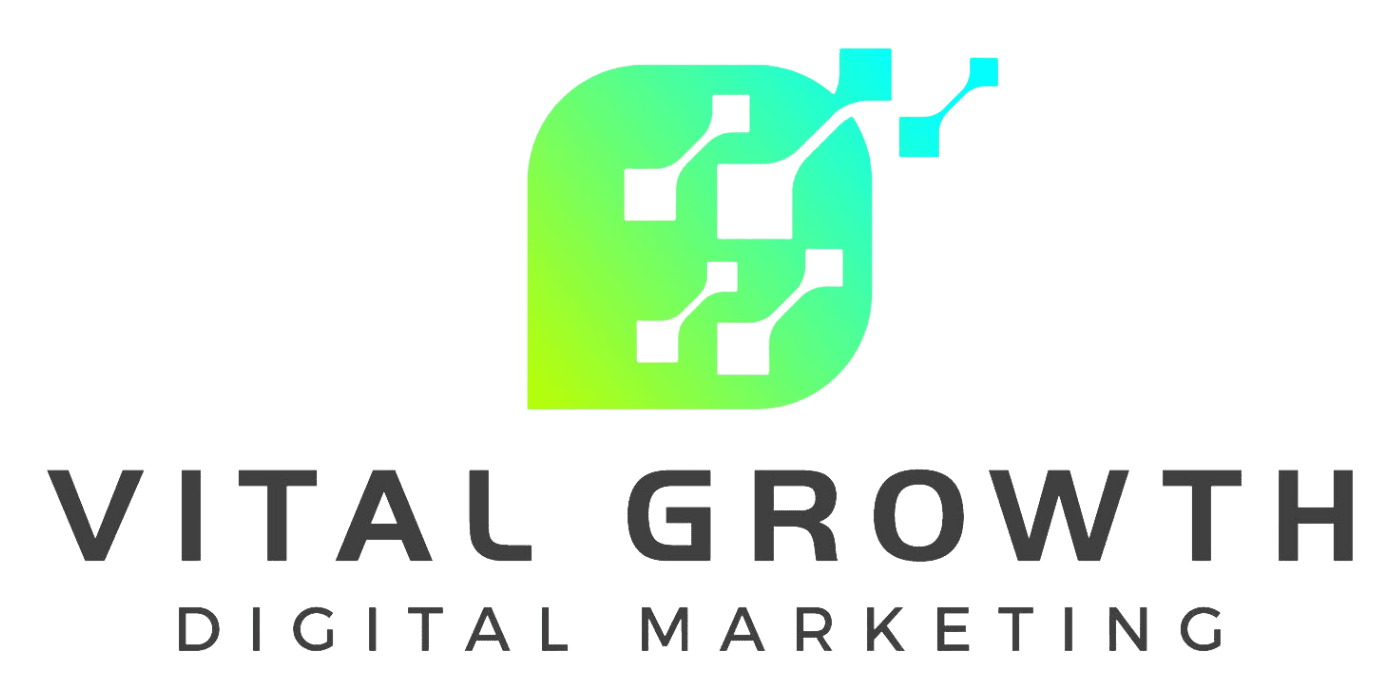Boost your brand and stimulate business growth with a carefully crafted content marketing strategy. This guide shows you every corner of content marketing, providing you with invaluable knowledge and practical advice.
We start by helping you understand your target audience’s needs, preferences, and behaviors, which is necessary for creating content that resonates with them.
Next, we provide tips on how to optimize content for various platforms and search engines, making sure your content reaches the widest possible targeted audience. We also talk about the art of storytelling, a powerful tool that can help your brand connect with audiences on a deeper, more emotional level.
User-generated content is another area we’ll explore. This content has immense potential, allowing your brand to tap into the creativity and advocacy of your customers. We also discuss the role of interactive elements in lead generation, helping you create engaging experiences that convert visitors into leads.
This guide is designed to be a resource for anyone involved in content marketing, whether you’re running a small business or working as a marketing professional in a large corporation. Our aim is to help you transform the reach and impact of your brand through effective, engaging content marketing.
Content Marketing Takeaways
- Begin by understanding your target audience – their preferences, behaviors, and needs. This knowledge is important for creating content that resonates with them.
- Optimize your content for various platforms and search engines. This ensures that your content reaches the widest possible targeted audience, enhancing its visibility and impact.
- Harness the power of storytelling and user-generated content. These methods can help establish deeper connections with your audience, promoting engagement and brand loyalty.
- Leverage social media and email marketing as effective channels for content distribution and amplification. These strategies can increase your content’s visibility and encourage customer interaction.
- Make use of interactive elements in your content. This can help generate leads by creating engaging experiences that convert visitors into potential customers.
How To Create A Successful Content Marketing Strategy
A successful content marketing strategy is extremely important for brand success, focusing on creating and distributing valuable content to attract and engage your target audience. Whether you’re a small business or an established corporation, the implementation of an effective content marketing strategy can elevate your brand and guide customers during their purchasing process.
A diverse content marketing plan that includes various content types is a key factor in achieving your business goals.
Here are some content marketing examples to consider:
- Blog posts
- Social media content
- Videos
- Podcasts
- Webinars
Developing your own content marketing strategy will help you stay ahead of the competition and make sure your content resonates with your target audience.
Defining Your Brand’s Core Message
Your brand’s core message is the bedrock of your content marketing strategy. Defining this message is the most important part of creating a consistent and impactful content marketing strategy that resonates with your target audience.
Crafting a brand story that emphasizes your company’s background, objective, aim, and principles can engage your audience and build brand loyalty.
Coupled with your brand story, having the right tools and resources for content creation, such as podcasting and video production equipment, a website and hosting platforms, and freelancer networks, is valuable.
With a well-coordinated content delivery process that aligns with your overall marketing goals, your brand’s core message will successfully reach your target audience.
Defining Marketing Goals and Objectives
The establishment of clear marketing goals and objectives guides your content creation and enables the measurement of your content marketing strategy’s success. By utilizing goal-setting frameworks like SMART and CLEAR, you can establish precise objectives that complement your overall marketing plan and corporate objectives.
Key performance indicators (KPIs) are significant metrics that aid in assessing the success of your content marketing strategy. By monitoring KPIs, such as organic traffic, social media engagement, and conversion rates, you can make data-driven decisions to optimize your marketing efforts and drive business growth.
The SMART Objective Framework
The SMART framework is a goal-setting tool that ensures objectives are clear, manageable, and trackable. SMART is an acronym that stands for Specific, Measurable, Achievable, Relevant, and Time-bound.
- Specific: The goal is well-defined and clear about what needs to be achieved.
- Measurable: The goal can be quantified or at least offers clear criteria that signal success.
- Achievable: The goal is realistic and within the capabilities of the individual or team.
- Relevant: The goal aligns with broader business objectives.
- Time-bound: The goal has a clear timeline for completion to maintain focus and urgency.
The SMART framework provides a structured and effective approach to goal setting, ensuring that objectives are robust, focused, and achievable.
The CLEAR Goal Setting Model
The CLEAR goal setting model is a modern adaptation of the traditional SMART framework, designed to cater to the dynamic and fast-paced nature of the modern work environment. The acronym CLEAR stands for Collaborative, Limited, Emotional, Appreciable, and Refinable.
- Collaborative: Goals should encourage team collaboration and foster a sense of shared responsibility.
- Limited: Goals should be confined in scope and time to keep them manageable and prevent overwhelm.
- Emotional: Goals should tap into the team’s passion and interest, making them emotionally invested in achieving the outcome.
- Appreciable: Larger goals should be broken down into smaller, manageable tasks to make them more approachable and to allow for quick wins.
- Refinable: Goals should be flexible and adaptable to changes in the work environment and business landscape.
The CLEAR model places a strong emphasis on adaptability, collaboration, and emotional investment, making it suitable for today’s agile and team-based work environments.
Understanding the Buyer’s Journey
Having an understanding of the buyer’s journey is extremely important for creating content that effectively meets the needs of your audience at each stage, from the initial awareness phase right through to the final decision-making stage.
This process involves the use of content mapping and developing detailed buyer personas, which enable you to create tailored content for each stage of the journey.
In the awareness stage, your audience is just beginning to recognize they have a need or a problem that must be addressed. At this point, your content should aim to educate them about the issue and introduce potential solutions, positioning your brand as a knowledgeable and trustworthy source of information.
During the consideration stage, your audience is actively researching and comparing different solutions to their problem. Your content should highlight the unique benefits and value of your product or service, helping to guide them towards choosing your brand as their preferred solution. Tools like newsletters, resource downloads, and comparative articles can be extremely useful at this stage, providing detailed information about your offerings and keeping your brand at the forefront of their minds.
Finally, in the decision-making stage, your audience is ready to start the buying process and make a purchase. Your content should provide clear and compelling calls to action, guiding them towards conversion and reinforcing the benefits of choosing your brand.
By understanding the buyer’s journey, you are empowered to produce content that precisely responds to the requirements and expectations of the audience at each stage. This leads to higher engagement and conversions, as your audience feels understood and catered to.
It’s important to use metrics such as newsletter sign-ups, returning visitors, and resource downloads to assess the interest of your prospects during the consideration phase. This data can provide invaluable insights into your audience’s behavior, helping you refine your content strategy and maximize your conversions.
Understanding the Target Audience
A profound understanding of your target audience is important for creating content that resonates with them and prompts engagement. By identifying buyer personas and utilizing audience insights, you can make informed, data-driven decisions about the type of content that will best meet their product, service, or business objectives.
In this section, we’ll explore:
- The importance of gathering audience insights
- Utilizing audience feedback
- Segmenting your audience to create personalized content that appeals to different groups within your target audience.
Gathering Audience Insights
The collection of audience insights is useful to understanding your target audience and crafting content that appeals to them.
To obtain these insights, you can:
- Conduct competitive research
- Conduct surveys
- Analyze data from social media
- Analyze data from website analytics
By employing tools such as Google Analytics, HubSpot, SEMRush, and Ahrefs, you can track custom metrics, analyze data, and collect feedback to better understand your audience’s preferences and behaviors. These insights can help you create content that resonates with your audience and drives engagement, conversions, and brand loyalty.
Utilizing Audience Feedback
Leveraging audience feedback is one of the most useful strategies for enhancing your content marketing efforts. By incorporating feedback from your customers, you can identify areas for improvement, optimize content effectiveness, and foster trust and loyalty.
Tools that can help you gather audience feedback and improve your content marketing strategy include:
- Trustmary
- Qualaroo
- SurveyMonkey
- Typeform
- Bazaarvoice
By understanding your audience’s needs and preferences, you can create content that is tailored to their requirements, leading to higher engagement and conversions.
Segmenting Your Audience
The segmentation of your audience is necessary for creating personalized content that appeals to various groups within your target audience. By dividing your audience based on shared characteristics, such as demographics, psychographics, and behaviors, you can create tailored content that resonates with each group, sending them completely relevant content.
To identify audience segments, you can use demographic segmentation, analyze audience data, and create reader personas. By understanding the unique needs and preferences of each segment, you can create content that is relevant and engaging, resulting in higher conversion rates and increased brand loyalty.
Creating Compelling Content
The creation of compelling content is important for capturing and retaining your audience’s attention. By crafting content that is informative, entertaining, and shareable, you can increase your brand visibility and authority while driving organic traffic to your website.
In this section, we’ll explore the following topics:
- Ideating and selecting topics
- Crafting engaging and shareable content
- Incorporating visual and multimedia elements to enhance the appeal and engagement of your content.
Ideation and Topic Selection
The process of ideation and topic selection are integral aspects of content creation. By conducting keyword research and analyzing competitor content, you can identify potential gaps and opportunities that will help you create content that resonates with your audience.
Utilizing tools such as Google Search Console, Google Keyword Planner, SEM Rush, and Ahrefs can help you find relevant topics and keywords for your industry.
By understanding your audience’s interests and pain points, you can create content that addresses their needs and drives engagement.
Crafting Engaging and Shareable Content
Crafting engaging and shareable content necessitates the use of various writing techniques and strategies, such as storytelling, persuasive writing, and creative wordplay, to capture your audience’s attention and stir an emotional response.
By providing high-quality content that connects with your audience on a personal level, you can increase engagement, improve brand loyalty, and drive conversions.
To make your content shareable on social media, ensure that it is:
- Useful
- Entertaining
- Inspirational
- Timely
- Thought-provoking
- Relatable
By validating the opinions of your audience and creating content that affirms their causes and beliefs, you can increase the share-ability of your content and expand your reach.
Incorporating Visual and Multimedia Elements
The integration of visual and multimedia elements into your content should be a part of every successful content marketing campaign and can significantly boost its appeal and engagement.
By adding videos, images, and tables, you can improve the quality of your content and provide a more immersive experience for your audience.
Utilizing visual content, such as images and videos, can also help convey ideas, captivate audiences, increase memorability, and evoke emotions. By incorporating these elements into your content marketing strategy, you can create a more engaging and memorable experience for your audience.
Content Optimization for Different Platforms
Content optimization across different platforms is necessary to maximize its reach and impact. By adapting your content to take advantage of the unique features of each platform, you can ensure that your message resonates with your audience and drives engagement and conversions.
Adapting content for various digital platforms
Modifying your content for various digital platforms is fundamental to maintain consistency and effectiveness. By considering the needs and behaviors of your audience on different platforms, you can create content that appeals to them and optimizes their experience.
Some effective strategies for adapting content include customizing the format, tone, and style of your content to suit the platform, as well as optimizing elements such as headlines, images, and calls-to-action for maximum engagement. By tailoring your content to each platform, you can maximize its reach and impact.
Understanding that each platform has its own unique features and audience demographics is important in crafting a content strategy that resonates with your audience. This involves tailoring your content to fit the platform’s style and format, as well as understanding the best times to post for maximum engagement.
Simply posting the same content on each platform will not yield the best results. Each social media platform has its unique set of users, with specific preferences and expectations. Therefore, you must customize your content to suit the characteristics of each platform.
Instagram users might appreciate visually appealing images or short videos, while LinkedIn users might be more interested in industry news or professional insights. Similarly, the fast-paced nature of Twitter might require more frequent updates with crisp, engaging text. Hence, understanding the nuances of each platform and adjusting your content accordingly can significantly enhance your content’s performance and engagement.
Whether it’s a quick update on Twitter, a detailed post on LinkedIn, or an engaging video on Instagram, adapting your content to each platform can significantly boost your reach and engagement.
Content Distribution and Amplification Strategies
The distribution and amplification of your content is important in reaching a broader audience and stimulating engagement. By leveraging various channels, such as email, social media, and syndication platforms, you can promote and distribute your content to maximize its reach and impact.
In this section, we’ll explore content distribution and amplification strategies, including:
- Leveraging social media for content amplification
- Using email marketing as a personalized touchpoint
- Exploring syndication and guest posting opportunities
Leveraging Social Media for Content Amplification
Social media holds a central role in the content marketing strategy. It enables brands to:
- Promote and distribute content to a wider audience
- Increase brand visibility
- Engage with followers
- Drive traffic to their websites
By using multiple channels, offering compelling incentives, and repurposing top-performing content, you can amplify your content’s reach and engagement on social media platforms.
By understanding the unique features of each social media platform and optimizing your content for these channels, you can maximize the impact of your content marketing efforts and drive engagement, conversions, and brand loyalty.
Email Marketing as a Personalized Touchpoint
Email marketing serves as an efficient method to nurture leads and cultivate relationships with your audience. By using personalized and targeted emails, you can engage your audience, provide value, and drive conversions.
Implementing email segmentation, optimizing subject lines and send times, using A/B testing, and using dynamic content can help you create personalized and engaging emails that resonate with your audience and encourage them to take action.
By leveraging email marketing as a personalized touchpoint, you can foster customer trust and loyalty, driving business growth.
Syndication and Guest Posting Opportunities
Syndication and guest posting present an effective method to amplify your brand visibility and assert authority in your niche. By republishing your content on other websites or platforms and contributing guest posts to reputable sites, you can reach new audiences and enhance your brand’s reputation.
To maximize the benefits of syndication and guest posting, it’s important to:
- Select appropriate syndication partners
- Conduct research on potential guest posting opportunities
- Create high-quality content that provides value to your audience
By exploring these opportunities, you can expand your reach and strengthen your brand’s authority.
Analytics and Measurement of Content Marketing Success
The measurement of your content marketing efforts’ success is important for the optimization of your strategy and the promotion of business growth. By using analytics and data-driven insights, you can track the performance of your content, identify areas for improvement, and make informed decisions to refine your content marketing efforts.
In this section, we’ll explore:
- The importance of setting key performance indicators (KPIs)
- Using content analytics tools
- Iterating based on data to continuously improve your content marketing strategy and drive success.
Setting Key Performance Indicators (KPIs)
The establishment of Key Performance Indicators, or KPIs, is imperative for monitoring the performance of your content and gauging its success. By establishing quantifiable metrics, such as organic traffic, social media engagement, and conversion rates, you can monitor the effectiveness of your content marketing strategy and make data-driven decisions to optimize your efforts.
By aligning your KPIs with your marketing objectives, you can make sure that your content marketing strategy is focused on driving results and contributing to your overall business goals.
Tools for Content Analytics
The observation and analysis of your content’s performance is necessary for the optimization of your content marketing strategy. By employing content analytics tools, such as Google Analytics, SEM Rush, Agency Analytics, HubSpot, Google Search Console, and Ahrefs, you can track custom metrics, analyze data, and collect feedback to better understand your audience’s preferences and behaviors.
These insights can help you:
- Refine your content marketing strategy
- Identify areas for improvement
- Create content that resonates with your target audience
- Drive engagement, conversions, and brand loyalty.
Iterating Based on Data
Insights derived from data are very useful for optimizing your content marketing strategy and propelling business growth. By analyzing your content’s performance, understanding your audience’s preferences, and making data-driven decisions, you can continuously refine your content marketing efforts and achieve greater success.
From tailoring your content to your audience’s interests to optimizing your content for search engines, iterating based on data will ensure that your content marketing strategy remains effective and relevant to your target audience, ultimately driving engagement and conversions.
Optimizing for Search Engines
Search engine optimization of your content is extremely important for enhancing visibility and directing organic traffic to your website. By implementing on-page SEO techniques, conducting keyword research, and building authority through backlinks, you can improve your content’s search engine rankings and increase its visibility on search engine results pages.
In this section, we’ll explore the importance of keyword research, backlink building, and on-page SEO techniques for optimizing your content for search engines and driving organic traffic.
Keyword Research for Content Optimization
Conducting keyword research is the best starting point for content optimization and targeting relevant search queries. By identifying and analyzing the words and phrases that people use to search for information online, you can understand which keywords are relevant to your target audience and incorporate them strategically into your content to enhance search engine visibility and draw organic traffic.
By understanding your audience’s search intent and incorporating relevant keywords into your content, among many other search engine optimizations you can make, you can improve your content’s search engine rankings and drive organic traffic.
Building Authority Through Backlinks
Creating authority through backlinks is necessary for increasing your content’s search engine rankings and its online visibility. By acquiring high-quality backlinks from authoritative websites, you can signal to search engines that your content is valuable and relevant, leading to higher rankings in search results.
To build authority through backlinks, you can create high-quality content that provides value to your audience, engage in outreach to relevant websites through email and social media, and leverage guest posting opportunities.
By building a strong backlink profile, you can increase your brand’s experience, expertise, authority, and trust, or E-E-A-T, and drive organic traffic to your website.
On-Page SEO Techniques
The implementation of on-page SEO techniques is integral for enhancing your content’s visibility and search rankings.
By optimizing elements such as:
- Titles: The title of your content is the first thing that users and search engines see. Make it descriptive and relevant to the content.
- Headings: Use headings to break up your content and make it easier to read. Headings also help search engines understand the structure of your content.
- Meta Descriptions: These are the short descriptions that appear under your title in search engine results. Make them compelling to encourage users to click on your content.
- URL Structures: Make your URLs descriptive and include relevant keywords to improve your SEO.
- Internal Linking: Use internal links to guide users and search engine crawlers through your website. This can help improve your SEO and user experience.
- Schema Markup: This is a form of structured data that can provide search engines with more detailed information about your content.
- Mobile-Friendliness: With the increasing number of mobile users, it’s important to ensure that your content is mobile-friendly.
- Page Load Speed: Improve your page load speed for a better user experience and improved SEO ranking.
- XML Sitemap: An XML sitemap can help search engines understand the structure of your site and find all of your content.
- Alt Tags for Images: Use alt tags to improve accessibility and keyword relevance. This can help improve your SEO and make your content more accessible to users with visual impairments.
You can increase your content’s relevance by providing relevant content and appeal to search engines.
By implementing these on-page SEO techniques, you can improve your content’s search engine rankings and drive organic traffic to your website.
Audience Engagement and Conversion Optimization
Engagement with your audience and content optimization for conversions are necessary to propel business growth. By creating content that resonates with your audience and encourages them to take action, you can increase engagement, drive conversions, and build long-lasting relationships with your audience.
In this section, we’ll discuss the importance of audience engagement, conversion optimization, and other advanced content marketing strategies for driving business growth. By understanding your audience’s needs and preferences, and creating content that addresses these requirements, you can foster customer loyalty and drive business growth.
Engaging Your Audience
Engaging your audience is important for any content marketing strategy. It’s not just about creating great content, but also about making sure that content resonates with your audience and prompts them to interact with your brand.
This could be through comments, shares, likes, or any other form of engagement. The more your audience interacts with your content, the more they feel connected to your brand.
Optimizing Your Content for Conversions
Another important aspect of content marketing is conversion optimization. This means crafting your content in a way that encourages your audience to take a desired action, such as signing up for a newsletter, making a purchase, or filling out a form.
This involves clear and compelling calls to action, as well as ensuring that your content provides clear value to the reader.
To further optimize your content for conversions, consider utilizing tools such as Microsoft’s Clarity, or other heat map software. These tools provide valuable insights into how users interact with your content, showing you where they click, scroll, and even where they pause.
This data can help you understand what aspects of your content are capturing your audience’s attention, and which parts might need tweaking for better engagement. For example, if you notice that users often abandon a page before reaching a crucial call-to-action, you might decide to move that call-to-action higher up on the page.
Similarly, if a particular image or headline seems to be drawing a lot of attention, you might choose to replicate that success in other areas of your site. Ultimately, these tools provide a data-driven approach to content optimization, allowing you to make informed decisions that can improve your conversion rates.
User Generated Content and Community Engagement
User-generated content (UGC) serves as an effective method to reinforce brand loyalty and community engagement. By encouraging your audience to create and share their own content, you can build trust and credibility, increase engagement, and enhance brand awareness.
To encourage user-generated content (UGC), you can:
- Provide incentives
- Recognize individuals
- Leverage influencer marketing
- Engage with customers on a regular basis
- Create a forum, or own a sub-reddit
Interactive Content for Lead Generation
Interactive content serves as a potent tool for lead generation and audience engagement. By incorporating quizzes, interactive blogs, chatbots, and other elements in your content, you can capture your audience’s attention and encourage them to take action.
By offering immersive experiences that provide value and entertainment, interactive content can drive engagement, generate leads, and contribute to your overall content marketing success.
By incorporating interactive content into your content marketing strategy, you can create a more engaging and memorable experience for your audience.
Storytelling and Brand Advocacy
Storytelling serves as a powerful content marketing technique that can help foster a strong emotional connection with your audience. By crafting compelling narratives that convey your brand’s values, mission, and identity, you can engage your audience, build trust, and drive conversions.
Implementing a well-thought-out content strategy can further enhance the effectiveness of your content marketing efforts.
Brand advocacy is another strategy that can enhance your content marketing efforts. By encouraging customers and employees to share their experiences and promote your brand through word of mouth, social media, and other channels, you can increase brand awareness, credibility, and loyalty.
Summary
Creating a successful content marketing strategy is important to business growth and staying competitive. This includes gaining a deep understanding of your target audience and creating content that truly engages and resonates with them.
Optimizing content for search engines is another component, making sure that your valuable content gets the visibility it deserves.
The power of storytelling, user-generated content, and interactive elements cannot be understated. These techniques can greatly impact your audience’s connection with your brand, leading to increased loyalty and engagement while driving conversions.
Understanding the buyer’s journey and optimizing content for different platforms are equally important. These efforts ensure that your content is tailored to your audience’s needs at every stage of their journey and is effectively delivered across various platforms.
The role of analytics and measurement in understanding the success of your content marketing efforts is a must. These insights allow for continuous refinement of your strategy, ensuring that it remains effective and relevant. Start today and unlock the full potential of your content marketing strategy.
What are content marketing strategies?
Content marketing is a strategic approach focused on creating and distributing valuable, relevant, and consistent content to attract and retain an audience. This includes publishing a blog post, video, podcast, or other media, as well as partnering with ad networks and social networks for wider exposure. Through this strategy, businesses are able to establish expertise, promote brand awareness, and keep their business top of mind.
What are the 7 steps of content marketing?
Content marketing is a process consisting of seven steps: defining your goals, creating content, planning the distribution of content, engaging with your audience, optimizing content, assessing performance, and readjusting your strategy as needed.
How can I identify my target audience for content marketing?
Identify your target audience by researching their needs and preferences and creating content that resonates with them. Focus on understanding buyer personas to develop an effective content marketing strategy.
What is the importance of keyword research in content optimization?
Keyword research is important for content optimization as it allows you to identify relevant search queries and incorporate them strategically into your content. This makes sure that your content is reaching the right audience and has higher chances of being found by potential customers.
How can I leverage social media for content amplification?
Leverage social media posts for content amplification by utilizing multiple channels, providing attractive incentives, creating high quality content and recycling high-performing content.
What is the definition of content marketing?
Content marketing is a strategic marketing approach focused on creating, publishing, and distributing valuable, relevant, and consistent content to attract and retain a clearly-defined audience — and, ultimately, to drive profitable customer action. Essentially, the content marketing definition includes the idea of providing useful and engaging content to your audience, instead of directly promoting products or services.












